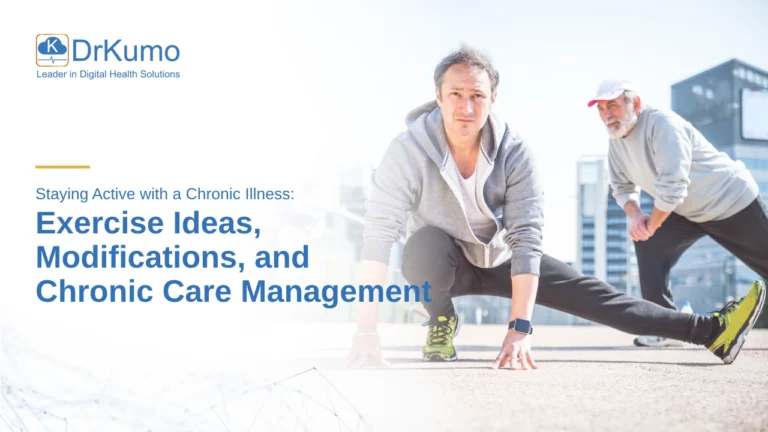Heart disease is a pervasive health concern in the United States, claiming one life every 34 seconds, as reported by the American Heart Association. With around 6.2 million adults affected by heart failure, and approximately 697,000 lives lost to the condition annually, heart failure continues to be a significant challenge for healthcare providers (HCPs). Despite notable advancements in treatment and management, heart failure remains a critical issue. However, the landscape of heart failure management is changing due to technological innovations, with remote monitoring of patients emerging as a promising solution to improve patient outcomes. This article will provide an overview of heart failure, its four stages, and explore how remote monitoring can revolutionize heart failure care.
Understanding Heart Failure
Heart failure, which is also known as congestive heart failure (CHF), is a persistent medical condition that can arise when the heart has stopped efficiently pumping blood throughout the body, leading to a diminished supply of oxygen and nutrients to the body’s tissues. CHF can occur when the heart muscles become weakened or damaged, and as a result, heart failure develops. Common signs and symptoms of heart failure include shortness of breath, fatigue, and swelling of the feet, legs, or abdomen.
There are two primary types of heart failure: (a) systolic heart failure – which happens when the heart muscle’s ability to contract is impaired; and (b) diastolic heart failure – which occurs when the heart muscle’s ability to relax is impaired.
What Causes Heart Failure?
There are several potential causes of heart failure, and it can develop when the heart is damaged or weakened. Here are some of the most common causes of heart failure:
- Coronary Artery Disease (CAD): CAD is a medical condition that results in the narrowing of the arteries supplying oxygen to the heart. This reduction in blood flow to the heart muscle can lead to a lack of oxygen and nutrients, causing the heart muscle to weaken over time. If left untreated, it can result in left-sided heart failure, right-sided heart failure, or both. Individuals diagnosed with this disease are at high risk of developing heart failure.
- High Blood Pressure (HBP): Prolonged HBP can damage the arteries and the heart muscle, causing the heart to work harder to pump blood. This damage can lead to the development of left-sided heart failure, where the left side of the heart becomes weaker.
- Heart Attack: This condition occurs when a coronary artery becomes blocked, leading to damage to the heart muscle. The scarred area may not function correctly, which can contribute to heart failure.
- Cardiomyopathy: This is a condition that can damage the heart muscle, making it less efficient at pumping blood to the body. There are several types of cardiomyopathy, including dilated, hypertrophic, and restrictive, that can lead to heart failure.
- Heart Valve Disease: Problems with the heart valve can cause blood to back up in the heart, which can lead to heart failure over time.
- Thyroid Disease: An overactive thyroid can cause the heart to beat faster and harder, leading to heart failure.
- Kidney Disease: Kidney disease can increase the risk of heart failure by causing fluid to accumulate in the body, putting more pressure on the heart.
- Birth Defects: Heart defects present at birth can lead to heart failure later in life, especially if they are not detected and treated early.
To sum it up, heart failure may develop when your heart cannot pump enough blood to meet the body’s needs. It can be caused by various conditions, such as HBP, CAD, and heart valve disease, among others. Understanding the causes of heart failure is crucial in preventing its development or managing the condition effectively.
What are the 4 Stages of Congestive Heart Failure?
CHF is a progressive condition that affects the heart’s ability to pump blood effectively. It advances through four stages, with each stage exhibiting different symptoms.
In the pre-heart failure stage, the patient may not experience any symptoms, and their heart may still function normally. However, the ejection fraction, or the percentage of blood that the heart pumps out with each beat, may be lower than the normal range.
As CHF advances to stage 2, the patient may begin to feel symptoms of heart failure such as shortness of breath, fatigue, and a reduced capacity for physical activity. These symptoms may worsen as the heart continues to weaken.
In stage 3, the symptoms of heart failure become more severe, including shortness of breath, even at rest, extreme fatigue, and swelling in the legs and ankles. The patient’s quality of life may be significantly impacted at this stage.
The final stage of CHF is stage 4, where the patient is likely to require hospitalization, and their quality of life is severely affected. The heart pumps blood inefficiently, and symptoms of heart failure may worsen, including extreme shortness of breath, fatigue, and swelling in the legs, ankles, and abdomen.
How is Heart Failure Treated?
The heart failure treatment may vary depending on the severity of the condition and the underlying cause. Here are some general treatment options:
Medications: Medications can help control the symptoms of heart failure and prevent complications. Common medications include diuretics to reduce fluid buildup, ACE inhibitors or ARBs to widen blood vessels and lower blood pressure, beta-blockers to reduce the workload on the heart, and aldosterone antagonists to reduce sodium and fluid retention.
Lifestyle changes: In addition to reducing sodium intake and limiting fluids, lifestyle changes such as quitting smoking, maintaining a healthy weight, and getting regular physical activity can help manage heart failure. Physical activity can strengthen the heart muscle and improve circulation.
Devices: Devices such as implantable cardioverter-defibrillators (ICDs) and cardiac resynchronization therapy (CRT) devices can help regulate the heart’s rhythm and improve its pumping ability.
Surgery: In some cases, surgery may be necessary to treat heart failure. Options include coronary artery bypass surgery, heart valve repair or replacement, and ventricular assist devices (VADs) that help the heart pump blood.
Healthcare professionals should collaborate with their patients to create a personalized treatment plan that effectively addresses their unique needs and goals. Additionally, remote patient monitoring (RPM), a method of healthcare delivery that uses technology to monitor patients outside of conventional healthcare settings, should be implemented for regular monitoring to ensure optimal progress and enable necessary adjustments to be made to a patient’s treatment plan.
Heart Failure Management with DrKumo Remote Patient Monitoring
DrKumo RPM presents an innovative solution for managing heart failure that benefits both patients and healthcare professionals. By offering patients the convenience of managing their heart failure from the comfort of their homes, DrKumo RPM reduces the risk of hospitalization, prevents the risk of developing heart failure, and facilitates personalized care. Patients can use the user-friendly mobile app to monitor their vital signs, track symptoms, and receive reminders for medication and appointments, allowing them to take an active role in their treatment. DrKumo RPM also enables HCPs to access real-time data on patients’ health status, providing valuable insights that enable informed decisions about patient care.
In addition, the AI/ML engine analyzes patient data to detect any changes in their condition and alert HCPs to potential problems before they become severe. This feature helps care providers to treat heart failure promptly, preventing the risk of complications and reducing hospitalizations. With DrKumo RPM, patients receive peace of mind, while healthcare professionals can offer tailored care that improves patient outcomes.
Moreover, DrKumo RPM is equipped with home medical devices such as blood pressure monitors, pulse oximeters, and wearable devices, allowing patients to measure their vital signs from the comfort of their homes. Early detection of the signs of heart failure is vital to prevent the development of heart failure and to ensure that treatment is effective. By monitoring their health regularly and living a healthy lifestyle, patients can work with their HCPs to manage their condition and improve their quality of life.
Takeaways
In conclusion, heart failure poses significant health challenges globally, but technology is playing a vital role in transforming heart failure management. DrKumo state-of-the-art RPM solution enables patients to manage their health from home while providing HCPs with real-time data for timely intervention. DrKumo RPM technology improves patient outcomes and reduces the burden of heart failure on society.
Contact DrKumo today to learn more about how our RPM technology can revolutionize your heart failure care practices and improve patient outcomes.








